Munsiyari located in the Greater Himalayan range in Pithoragarh district of Uttarakhand (India) is a scenic little village that enthralls you with its captivating view of the Panchachuli Range and uniquely salubrious climate.
The Tribal Heritage Museum in Munsiyari is around 2 km from the Main Munsiyari market (Munsiyari is in Pithoragarh district of Uttarakhand, India) and is located in Nanasen village.
Tribal Heritage Museum or as is locally (read fondly) called Masterji’s or Massab’s Museum is the labor of love and tireless efforts of a single person, Dr. Sher Singh Pangtey, a Ph.D. on Bhotia Tribes in Johar Valley.
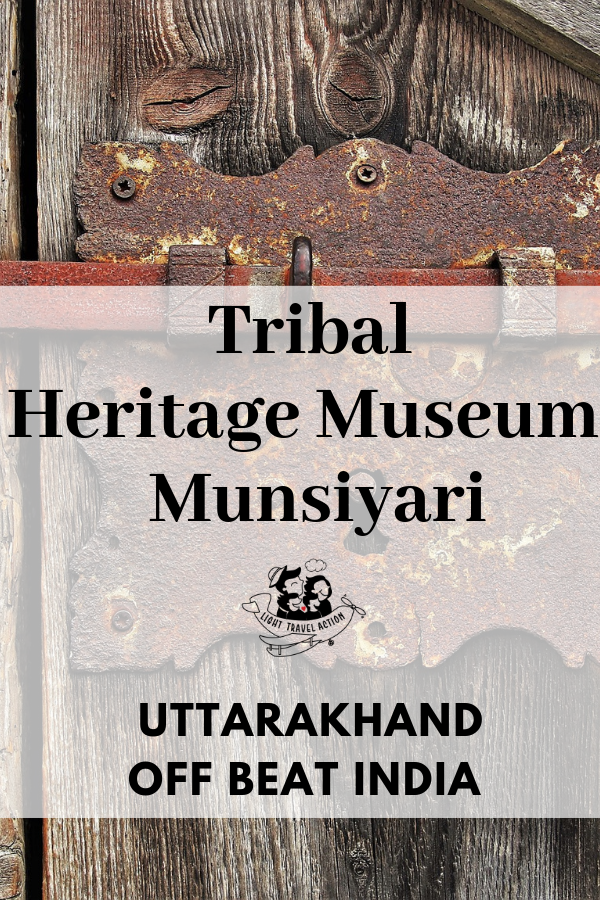
If you are in Munsiyari, I suggest you add this Tribal Heritage Museum to your must visit places in Munsiyari.
“Where is the Tribal Heritage Museum?” we asked!
“Massab ka museum? Woh dooooor wahan, laaaaaal rang ki chhat, museum ki hai”
“Massab’s museum? Faaaar away daaaaown there, the redddd color roof is of the museum”
By the stress on ‘far’ and ‘red’ given by our home-stay host Chandra didi, we gathered that the museum was far and yet not very far and the roof was red, but a deeper shade of red. That’s how interestingly she spoke.
Longer the stress further the distance or deeper the shade!
Munsiyari and it’s people do know how to charm you with their simplicity.
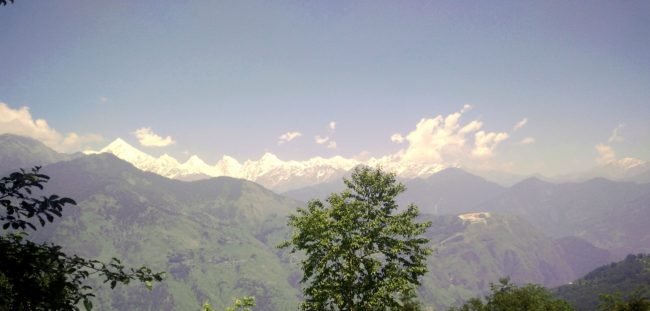
Going down the hill from Sarmoli (the village where we were staying in a homestay), we walked across wheat farms, giggling children returning from school, grazing cows who ignored us, people sipping tea waved at us, the smell of food wafted from the Kumaoni kitchens before we finally reached Massab’s Tribal Heritage Museum.
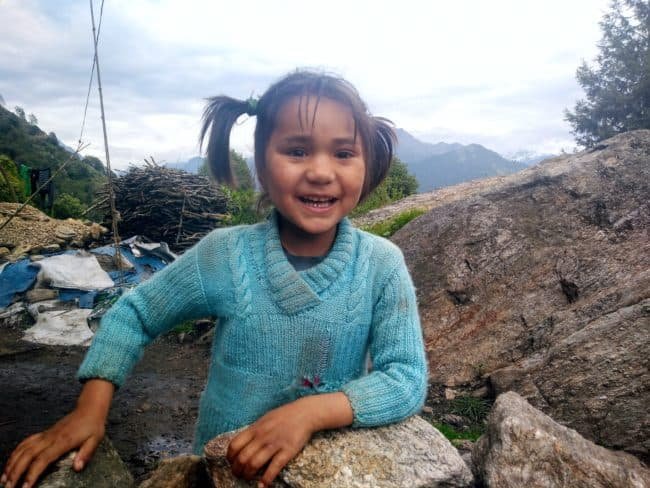
Guardian of the Bhotiya Tribe Heritage
Afraid, that the Bhotiya culture and its legacy would soon be forgotten, Dr. Pangtey took upon himself to record, document, and archive the community’s heritage.
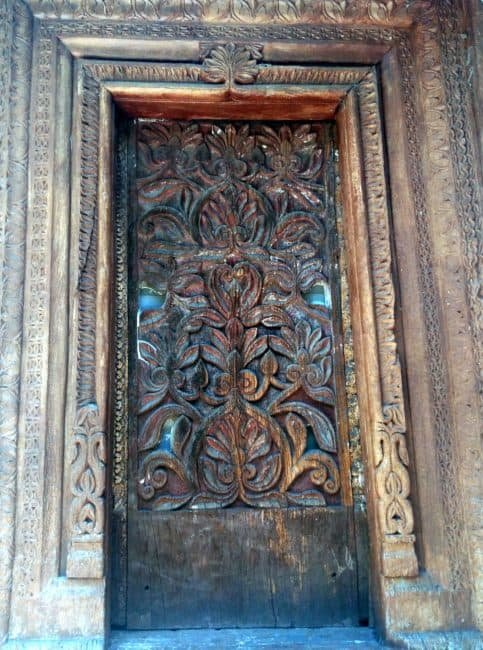
Former Trans-Himalayan traders, the Shaukas also known as Johari or Johari Shauka are referred to as Bhotiya by the non-Shaukas.
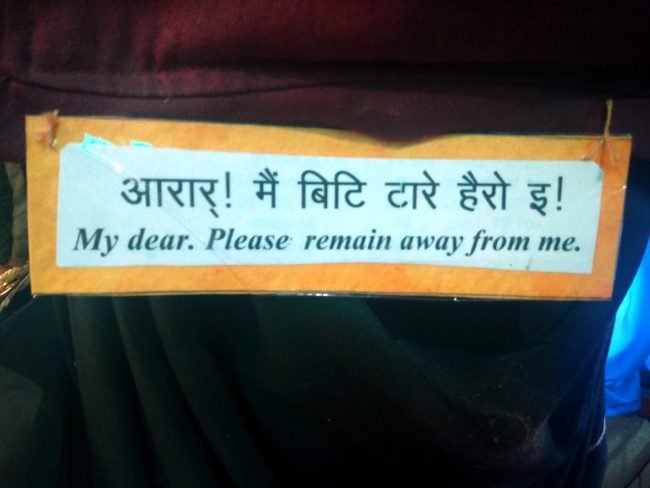
Knocking at the doors!
With changing times the Bhotiya’s were adopting the traditions of Kumaoni Hindus and were losing regard for the Bhotiya tradition.
Dr. Pangtey went door to door of Bhotiya houses in nearby villages and collected anything and everything traditional that the Bhotiya people were disposing off.
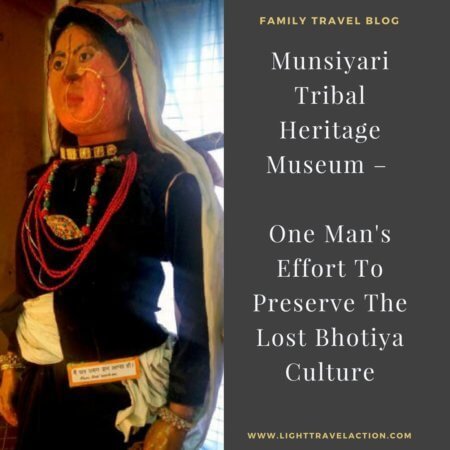
These included items like jewelry made of leopard nails, wooden wine bottles, cooking pots, stones inscribed with Buddhist sermons, coins, saddlebag, hookahs which are now prized possessions of the Heritage Museum.
The Museum
Today, the museum is a treasure trove of artifacts in the form of herbs, cooking utensils, ornaments, weapons, musical instruments, vessels used to distill alcohol, spinning wheel, trade treaties before independence from China and Tibet, maps & local spices and local handicrafts.
It gives you a glimpse of the culture and traditions of the Bhotiyas.
A typical feature of hill populace, the Bhotiyas traditionally eat twice a day, one around morning before leaving to work and one in the late evening after returning from the work.
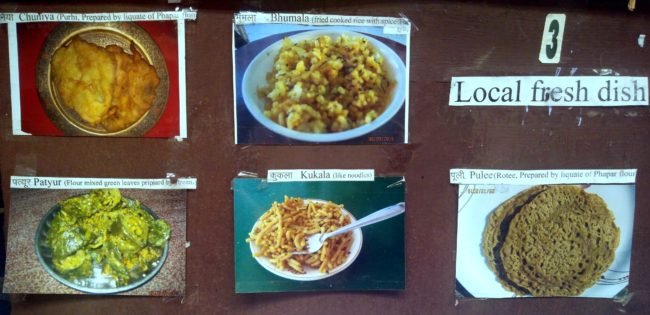
Like traditional Bhotiya households, the entrance of the museum has a unique taal (a sickle shaped key) and Gareli (a lock in shape of a wooden block)!
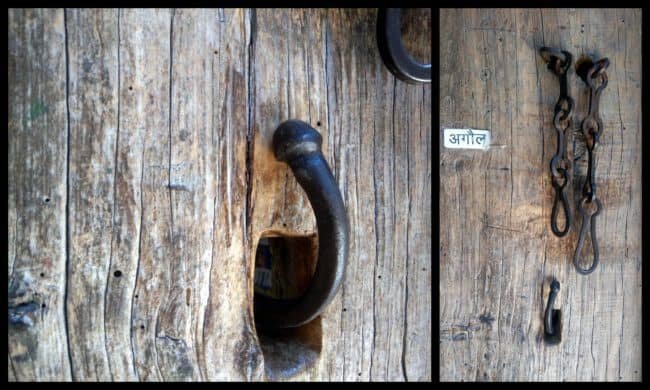
Also on display was an insect found in the Malla Johar region called ‘Yartsa Gunbu’ also known as the medicinal mushroom in the west. Due to its aphrodisiac qualities, it is also known as ‘Himalayan Viagra’.
One that caught my fancy was this ‘Alcohol Distillation’ unit.
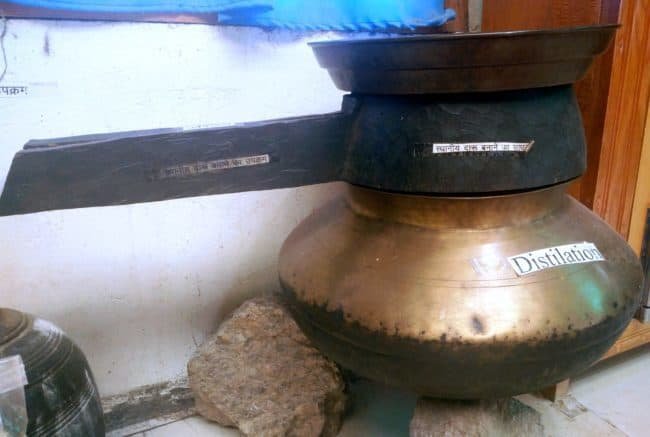
There are little ‘lessons’ in responsible tourism written in English and Bhotiya language, which makes for an interesting read!
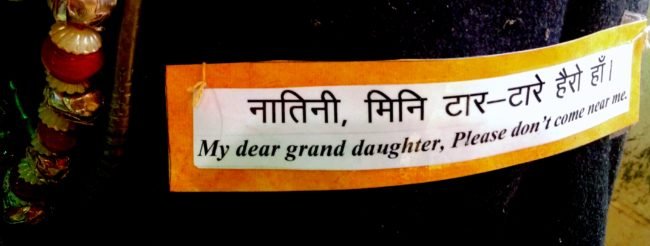
There is the old currency of various countries Bangladesh, Colombia, UK, Singapore, China, Indonesia, Bhutan and many other.
Kids were excited to see the Indian decommissioned notes of ₹1000 and ₹500!They felt amused to have seen something which is now part of history!
Folklore about Shaukyas (Bhotiyas)

Long ago, the great serpents called ‘Nagas’ inhabited the Johar Valley. Garuda, a hawk who is the mount and insignia of Lord Vishnu, persecuted all but one of the serpents!
Before it could kill the last Naga, Garuda was struck down by Shaukya Lama.
Enchanted by the beauty of the place, Shaukya Lama, decided to make the valley his abode. Thus, the Shaukya tribe originated and are still its inhabitants.
The Sino-Indian War of 1962
The Sino-Indian War of 1962 led to the closure of the Indo-Tibetan border.
This resulted in the end of the thriving lifeline of the Bhotiyas whose main occupation was trading with the Tibetans.
The loss of trade brought about drastic changes in the transhumant (seasonal movement of people with their livestock between fixed summer and winter pastures) lifestyle of the Bhotiyas.
Since then, the Bhotiya tribes have generally adopted semi-agrarian and semi-nomadic lifestyles.
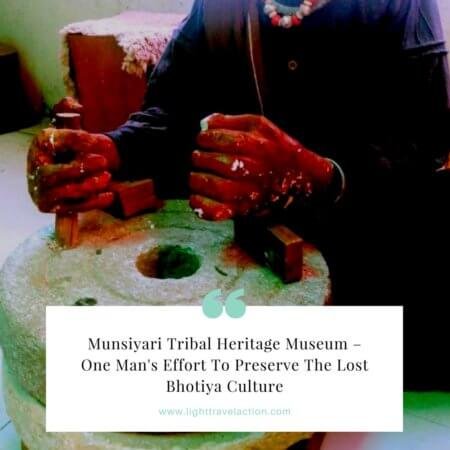
Though the museum looks run down, it is a potpourri of interesting information about the Bhotiya / Shaukya tribe’s culture and traditions.
There is an audio guide being played on the Public Address system to see you through the exhibits.
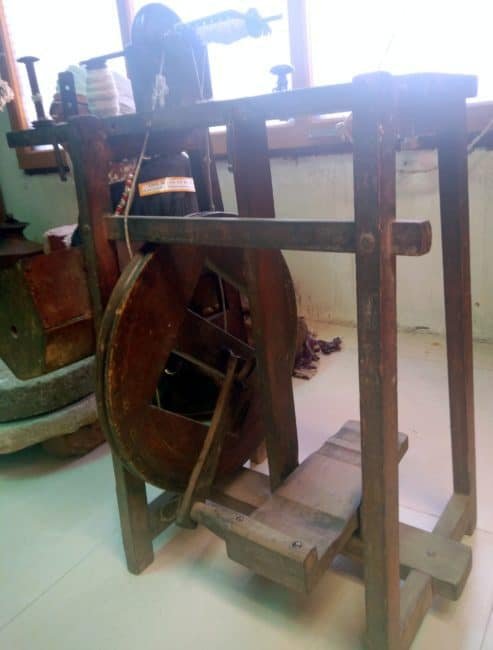
Entry Fees
₹10
Hours
10am-5pm most days
Shop
You can buy photographs, CDs of the festivals and fairs of Uttarakhand from here. Also available are shawls and caps.
Contact
9411337094
Video on Tribal Heritage Museum Munshyari
This video by ChandCreations has an interview of the curator and owner of the Tribal Heritage Museum Sher Singh Pangtey, fondly called Massab.
Munsiyari located in the Greater Himalayan range in Pithoragarh district of Uttarakhand (India) enthralls you with its captivating view of the Panchachuli Range and uniquely salubrious climate. Here are 4 detailed posts that will help you in planning your Munsiyari Travel.
- Munsiyari (Detailed Guide) – How to reach, what to do, where to stay, what to buy and more.
- Where to Stay in Munsiyari: 7 things nobody tells you about Munsiyari (Sarmoli) homestay!
- What to visit in Munsiyari: The Tribal Heritage Museum, Munsiyari – One Man’s Effort To Preserve The Lost Bhotiya Culture.
- Where to Trek in Munsiyari: Mesar Kund – A perfect family trek in the Kumaon hills of Munsiyari!
Sharing is Caring! If you have liked reading the post please feel free to subscribe to email and share it with your friends and follow us on Facebook and Instagram.
PIN IT
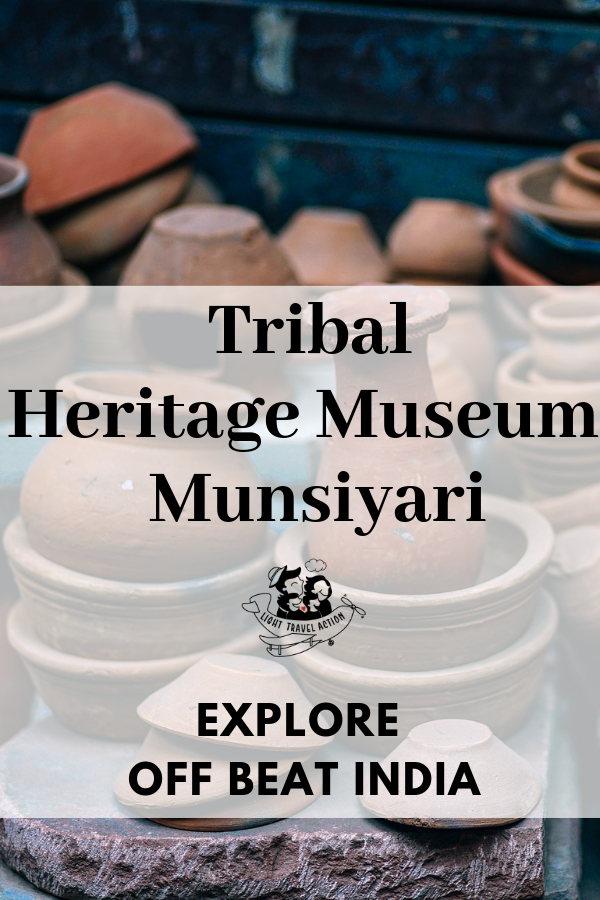
Have You been to any such awe-inspiring Museum? We would like to hear about it in our comments section 🙂
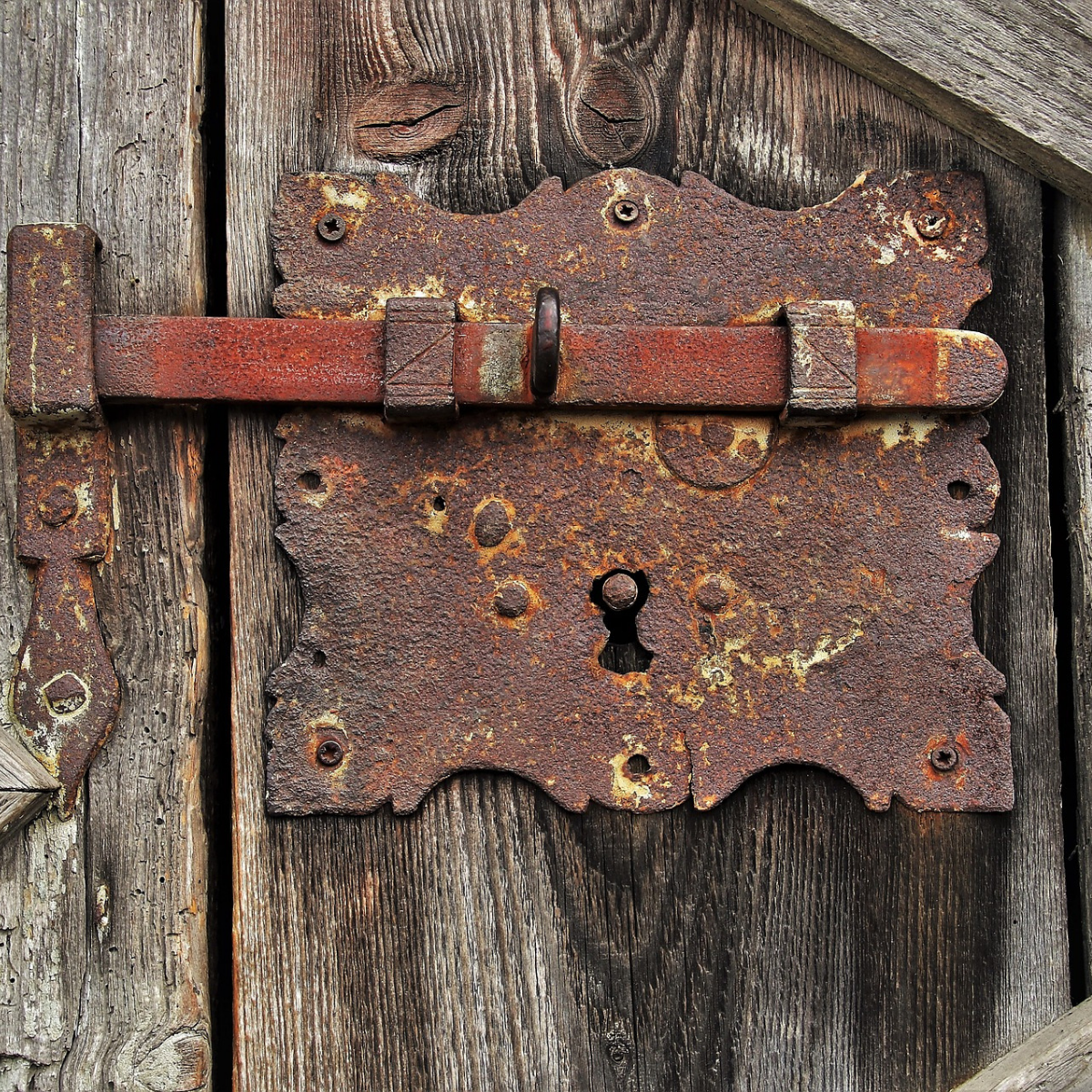
Delighted to meet another travel addict family. We were all alone in the Indian travel Blogging world, dominated by all but family travelers. Now no more. ..
That’s really sweet of you to stop by Jaishree. I love the poetic descriptions in your blog 🙂